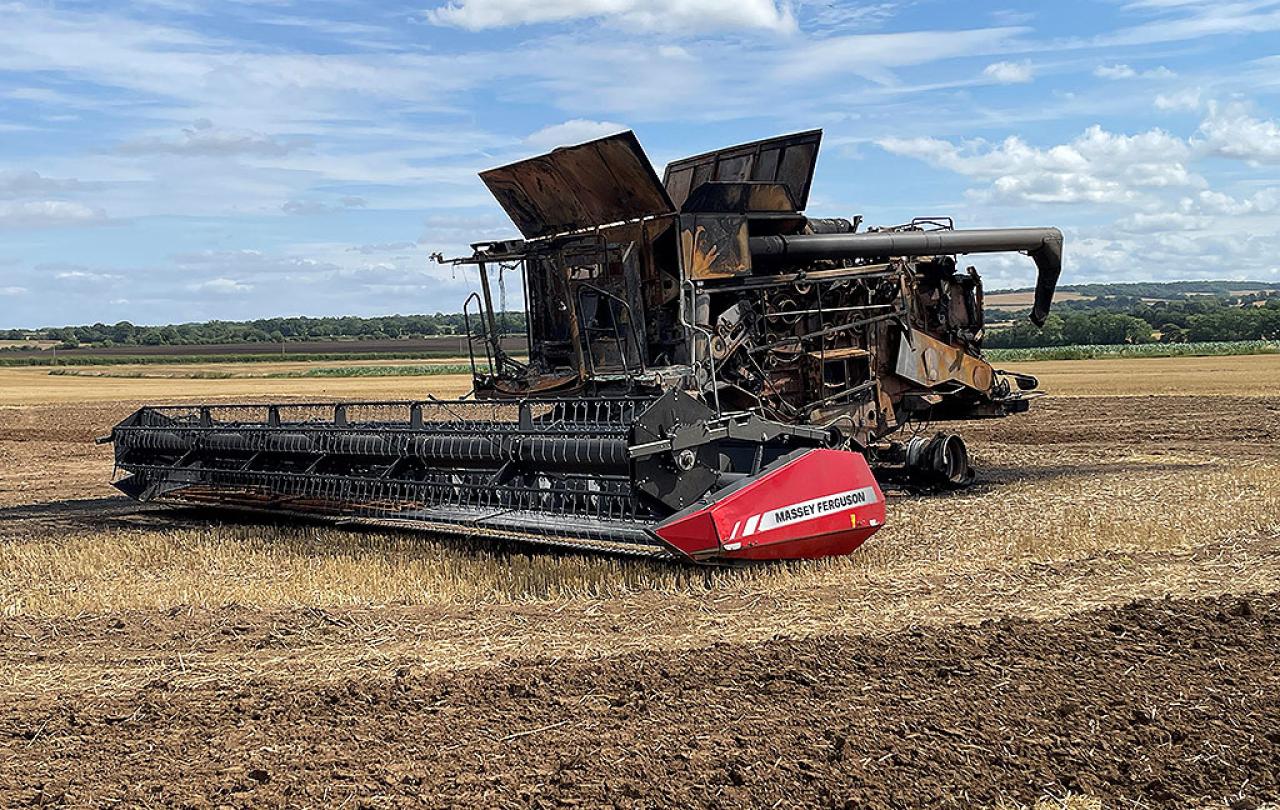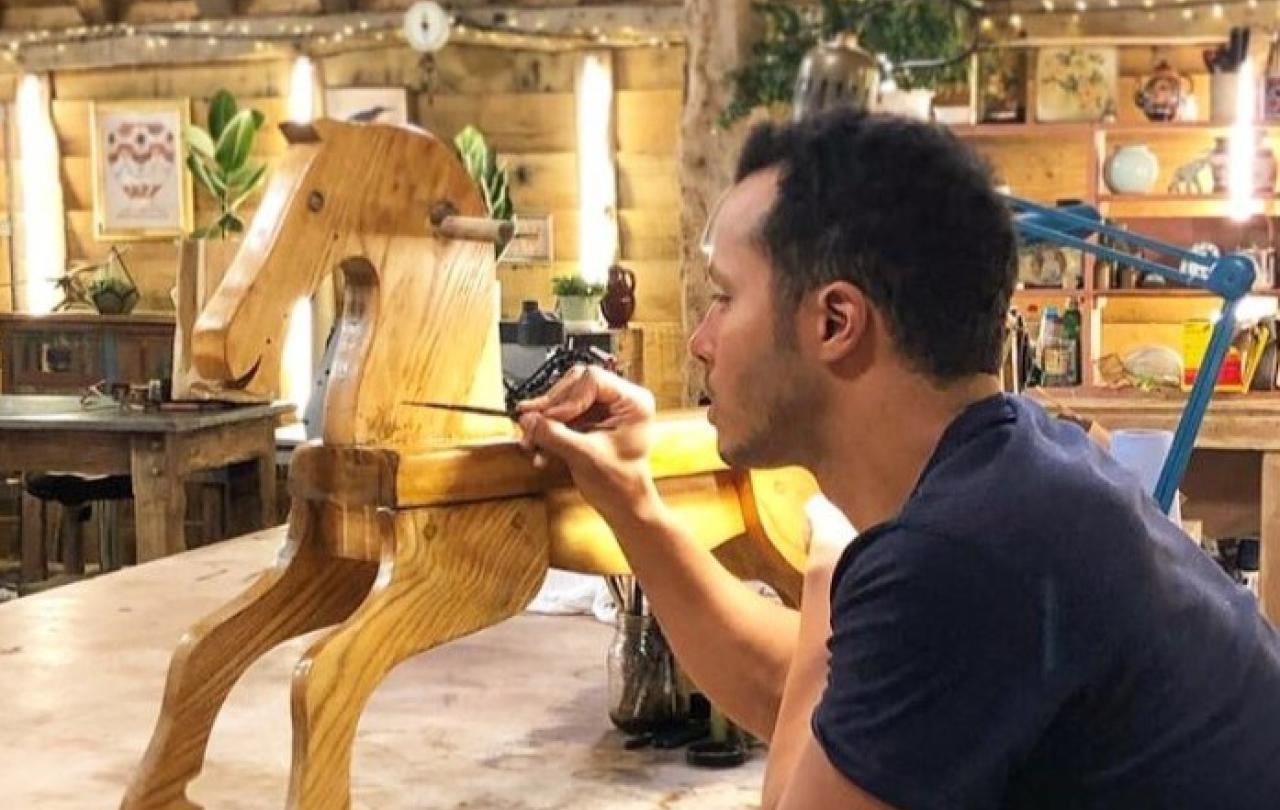
“Better red than expert.”
That was one of the slogans touted through the national propaganda channels in the early days of the People’s Republic of China shortly after Chairman Mao came to power. In other words, professionalism should be subordinated to politics.
It seems a pretty accurate description of the current UK government’s own attitude to farming in the light of their controversial inheritance tax raid on the nation’s farmers. Prior to last month’s budget, Agricultural Property Relief meant that farmers could expect to hand all qualifying agricultural assets on to the next generation without lobbing their children the simultaneous hospital pass of a whopping great tax bill. It was this inheritance tax relief and this alone that allowed every typical asset-rich/cash-poor farming business to survive as a going concern from one generation to the next.
Chancellor Rachel Reeves, perhaps applying her “better red than expert” thinking, identified this as a tax loophole that needed to be closed. She says it is costing taxpayers £1billion a year - which, when you think about it, is like a man who’s just cornered you in a dark alley saying you are costing him and his mates £100 by keeping those two shiny fifty pound notes in your own pocket.
Farmers will now be expected to cough up 20 per cent of the value of their agricultural property into the national coffers with every passing generation. It doesn’t take an expert mathematician to realise such an erosion of capital needed to pay these bills will render many farming businesses untenable, particularly given that farming relies heavily on economies of scale. This represents a torpedo strike on the farming industry which will sink a very large number of people, not just so-called Barley Barons.
No matter that the uptick of increased annual tax take from this measure will barely be enough to cover a day and a half of the NHS spend. Nor that while the government claims that, with a threshold of £1million before inheritance tax applies, 72 per cent of “farms” will not be affected (their definition including small parcels of land, and so-called toy farms which make no pretence to be food-producing businesses), the National Farmers Union says the true figure is closer to the inverse of that.
John McTernan, a former aide to Tony Blair and supporter of current PM Keir Starmer, didn’t help cool tempers with his revealing comment that farming was an industry which the UK could do without. “Labour can do to farmers what Margaret Thatcher did to the miners,” he said. Starmer was quick to distance himself from these incendiary remarks.
But as farmers would no doubt appreciate, what looks and smells like horse manure, probably is horse manure. And these measures are what they look like: an outright attack on the farming community, and more widely the ancillary rural economy which farming supports. The average farmer would be forgiven for thinking this feels far more ideological than fiscal in its aims.
That is why this week will see the largest rural protest in Westminster since the Countryside Alliance march in 2002. Farmers will converge on the Houses of Parliament to ask the government to reconsider such a direct attack on the food security of this country.
Given this fraught situation, are there any lessons to be learned from the past?
You have to wonder whether arguably the most left-wing government this country has ever seen is taking ideological plays out of the history book. Such tax raids on farmers' fields are nothing new. From ancient biblical times even to the last one hundred years, the consequences effect much more than the economy, they reach even to the soul of nations.
If farmers as a community stand in the way, what is the objective that lies beyond them, which the new utopians hope to attain?
In 1920s Russia, the Bolsheviks specifically targeted a class of landed smallholders known as the Kulaks.
The Kulaks were relatively prosperous, independent farmers, who faced severe repression during the 1920s and 1930s under Stalin's Soviet government. Originally benefiting from land reforms after the Russian Revolution, they were seen by Stalin as a threat to his goal of collectivizing agriculture. By labelling the Kulaks as "class enemies" of the working class, Stalin launched a campaign to liquidate them as a class around 1929, aimed at confiscating their land and redistributing it to state-owned collective farms.
The Soviet government seized Kulak farms, livestock, and tools, often forcibly relocating families to remote regions or sending them to labour camps where many perished due to harsh conditions. This campaign fuelled widespread suffering, triggering famine, especially in Ukraine, where it contributed to the devastating Holodomor. By the early 1930s, the Kulak class was effectively destroyed, resulting in millions of deaths and lasting trauma across the Soviet countryside.
Or how about China?
During China’s Cultural Revolution (1966–1976), smallholders and farmers faced severe disruption as the government under Mao Zedong sought to enforce collectivization and reshape rural life. Although China had already implemented collectivization during the 1950s, the Cultural Revolution intensified the suppression of individual farming and private land ownership, pushing for even greater alignment with socialist ideology. Farmers were forced into collective communes where land, equipment, and resources were shared, and individual autonomy was abolished.
Many were publicly humiliated, re-educated, or sent to labor camps. In addition, the chaos of the period meant that agricultural expertise was disregarded, as revolutionary fervour prioritized political ideology over practical farming knowledge. The mismanagement of agriculture, paired with forced collectivization, led to poor yields and food shortages, further destabilizing rural areas and causing hardship for millions of farmers and their families.
None of this is very encouraging for farmers in twenty-first century Britain. Especially when one considers how ideologically-driven Keir Starmer truly is, if his contributions to back issues of the magazine “Socialist Alternatives” in the early 1990s are any indication.
But if the socialist goals of the twentieth century were collectivisation and the social engineering of class warfare, what could they be today? If farmers as a community stand in the way, what is the objective that lies beyond them, which the new utopians hope to attain?
Again, it doesn’t take an “expert” to hazard a guess. Ambitious government plans to iron-clad the countryside in solar panels and wind turbine farms in a drive towards net zero will be made considerably easier once the current landowners are forced to flood the market with cheap land in order to service a hefty inheritance tax bill. All to save us from imminent environmental Armageddon.
As they listen to what farmers have to say this week, Keir Starmer and Rachel Reeves might do well to reflect on the fate of Jezebel and her king.
This is a narrative that some can at least imagine. But perhaps that is straying too far into what most would consider conspiracy theory at this point, so let’s back up a little.
All the same, when a wrong of this magnitude is done to a particular group of people - especially one made up of some of the most dependable, uncomplaining, and hard-working members of society, it seems reasonable to ask the question: Cui bono? Who benefits from this wrong?
For the answer to that, we shall have to wait and see how it unfolds.
But in the meantime, it is worth considering a perspective from even deeper in the past. A perspective on the “good” that comes from the ownership and stewardship of the land, especially land seen as a family or tribe or nation’s inheritance. With powerful stories set amid ancient fields the Bible has much to say on the matter.
In a sense the whole of the Old Testament is concerned with this question. God gives Adam and Eve land to steward and cultivate. And then expels them from it as a consequence of their sin. From Abraham until Israel’s exile, the story of God’s chosen people is profoundly linked to a promised land which is first placed in their hands as a blessing and means of sustenance and support - of life itself. An inheritance to be preciously held, stewarded, and passed on from generation to generation. And yet which is taken away again by the hand of God’s judgement when Israel turns away from its Lord and Sustainer.
But consider just one story for a moment: that of the humble farmer Naboth and his little vineyard, described in the first book of Kings. This provides an eerily close analogy to the UK government and its current land grab. It is both powerful and chilling.
One day the state, in the form of King Ahab, decides it would rather like Naboth’s vineyard for itself. Ahab offers Naboth money for it. Naboth refuses, saying, “The Lord forbid I should give you my inheritance.” Ahab - “vexed and sullen” - rages in frustration, until his wife Jezebel concocts a far more cunning scheme to get him that land, involving lies, slander and ultimately murder. There’s a twist in the tail, though. Once Ahab has what he wants, God sends his prophet Elijah to denounce his wrongdoing and warn him of his (rather grisly) coming fate.
For those with half an eye on the unseen as well as the seen in this country, the introduction of this family farm tax at this time may come as no surprise. Many in the church have perceived the “spirit of Jezebel” as ascendant on a number of cultural fronts at this moment in our history.
For Israel, the reign of Jezebel was a dark and uncertain time. And for farmers protesting on Tuesday, they may feel this is no less a dark and uncertain time.
As they listen to what farmers have to say this week, Keir Starmer and Rachel Reeves might do well to reflect on the fate of Jezebel and her king.
And for their part, farmers might reflect on the blessing of the inheritance they have received; and what, like Israel before them, they may have done - or not done - in the eyes of God, to jeopardize their chance to pass it on.
After all, at this point in the story, it’s not too late for either side in these farm wars to turn back.





